About this article
Categories
In the world of printing, there are many different techniques, methods, and prints. Each of them comes with unique characteristics, as well as advantages and disadvantages. We have chosen to focus our entire production on one of the most popular prints, the transfer print, and in this guide, we will share our expertise in this field. We will take a deep dive into what a transfer print is, how it works, the different types available, and more!
Transfer prints are created by first printing a desired logo or design onto a carrier, such as polyester film, and then curing it in an oven. The print can then be stored or applied to a material using heat and pressure. Transfer prints are primarily used for printing on textiles like shirts, t-shirts, sweatshirts, and bags, but also for labels, promotional items, and souvenirs.
Transfer prints, an indirect printing method, are based on the screen printing technique. The difference between the two methods is that in screen printing, the design is directly printed onto the garment, whereas in transfer printing, as mentioned above, it is first transferred onto a carrier film or paper.
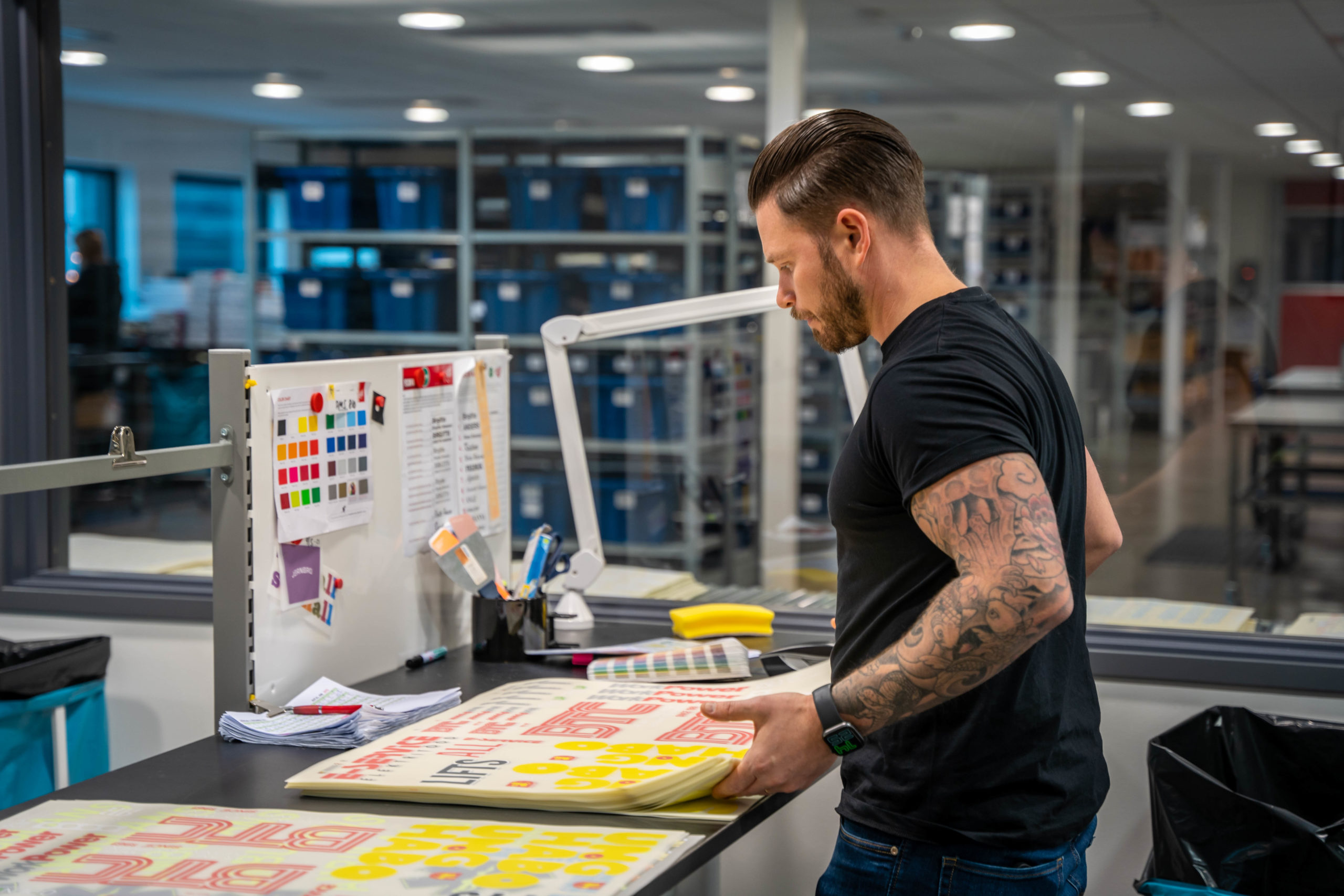
We delve into our own production process in a separate guide. However, in general, it can be stated that the process of creating a transfer print begins when a design is created on a computer and then uploaded as vector graphics into a tool, such as Adobe Illustrator. The desired design is then transferred onto a carrier film in several steps, depending on the number of colors the logo has. Finally, the back of the carrier is coated with a powder that becomes sticky when heated – the type of adhesive used plays a crucial role in terms of longevity, high quality, and durability. Subsequently, the transfer print is cured in an oven and is ready to be applied or stored. During application, the print is pressed onto the garment in a transfer press over a specific duration of time and at a specific temperature. The heat and pressure from the press cause the adhesive layer to fuse with the fabric.
Consistent pressure and even heat are especially important to ensure the durability of the transfer print. If the print is applied incorrectly, it may come off over time. It can also be challenging to print on garments with certain types of coatings. We provide more detailed information about various types of textiles and how to print on them in the Print Guide.
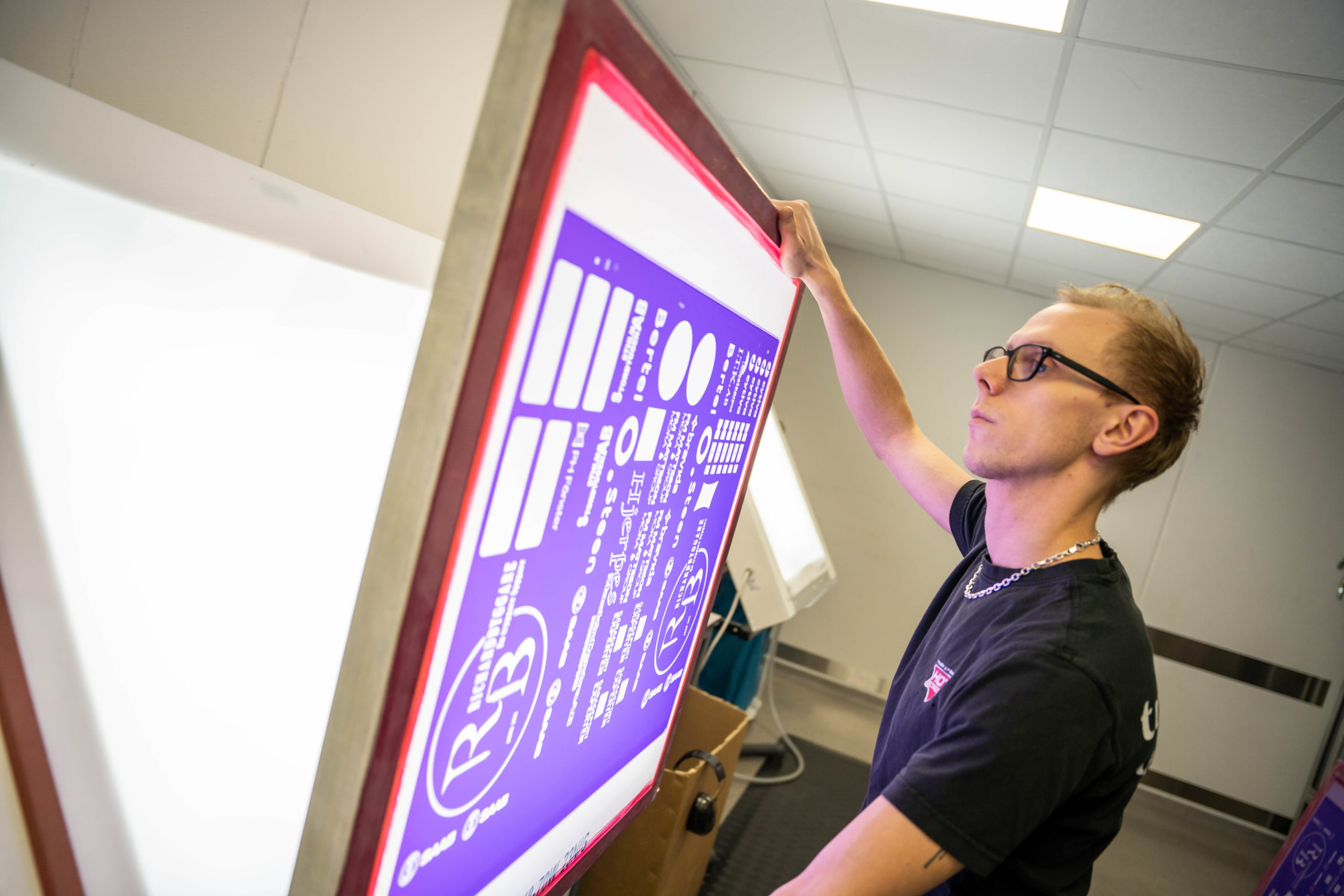
It can sometimes be challenging to make an exact distinction between certain printing methods. Some of them might even overlap, like thermal transfer printing. Here, we list methods that are in some way connected to the category of transfer prints:
Screen printing, the predecessor to transfer printing, is a method where ink or color is transferred onto a surface through a fine-mesh screen. The screen is equipped with a stencil that contains the desired design. The color is applied to the screen and pushed through the openings in the mesh using a squeegee. The print is then cured by heating the garment in an oven.
In transfer printing, the design is first printed on a carrier and then cured. When transfers are ready, they can either be stored or applied directly to the garment using a transfer press. The color is then transferred from the carrier to the fabric.
Offset printing is an indirect printing method. The print is not transferred directly from the printing plate to the paper or fabric, but indirectly through a roller. There are areas that repel water and accept printing ink, as well as areas that attract water and repel ink. This creates a printed image on the plate, which is then transferred onto the material. Offset printing is known for its high print quality, efficiency, and cost-effectiveness.
With this printing method, the image is directly printed from a computer onto transfer paper. Digital transfer printing is suitable for smaller quantities and hobbyists. Although this option offers almost limitless possibilities, the designs unfortunately lose a significant amount of their quality after washing, with colors fading and the foil often wrinkling.
This technique involves placing a special foil with temperature-sensitive ink between the material and a thermal print head. The heating elements in the print head transfer the design through pressure onto the desired material.
Here, an image is printed in reverse onto a specially coated foil using special ink. After the ink is applied, adhesive is sprinkled onto the wet ink and cured with heat. The print is then transferred using a transfer press onto various surfaces, such as cotton, leather, or solid materials.
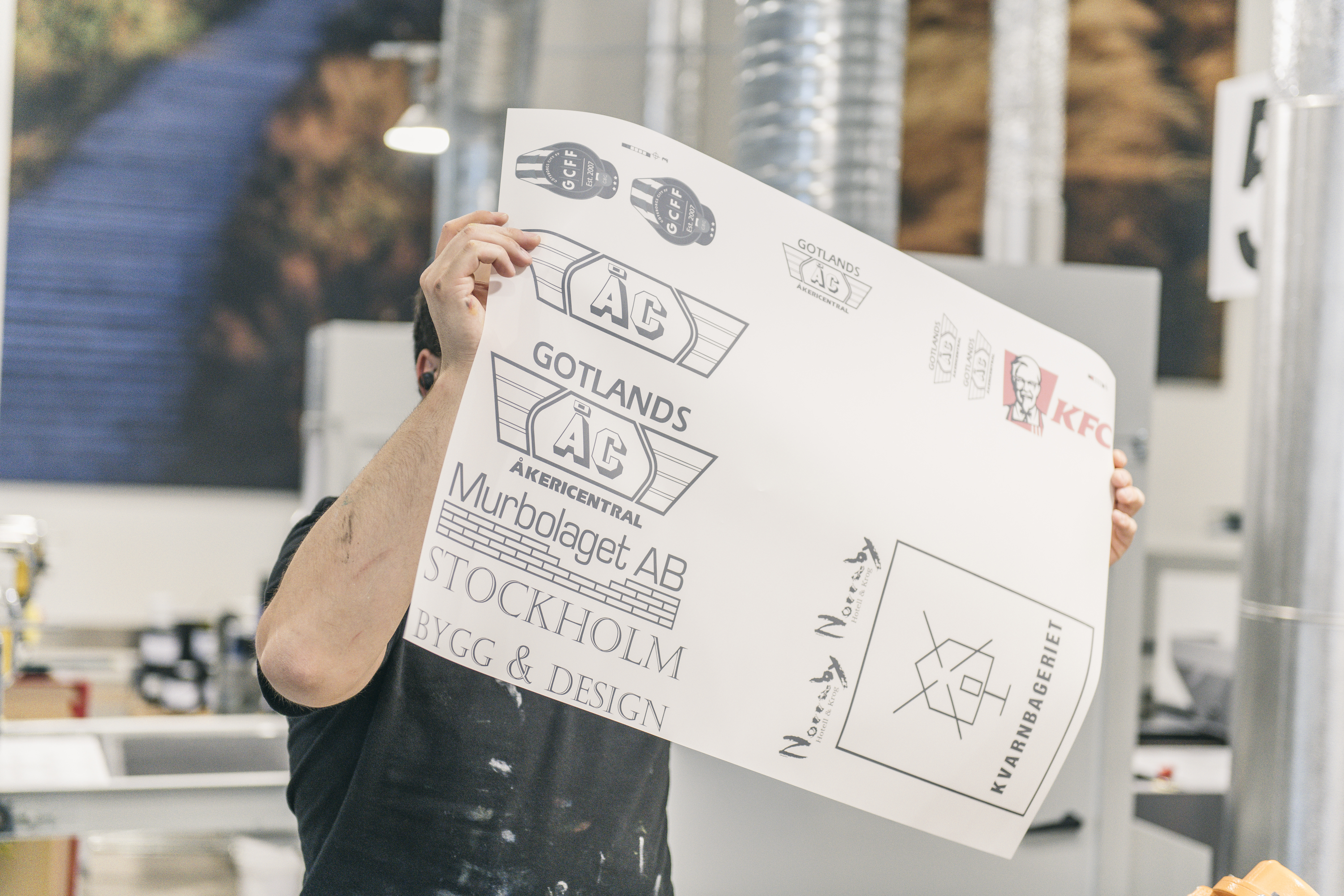
Transfer prints are used to transfer logos, images, or designs onto various surfaces. At our company, you’ll find transfer prints with different properties, making them suitable for various purposes. Strong Heat Transfer, for example, is excellent for textiles that require a permanent and durable transfer print. This transfer can be ordered in the entire Pantone-C color range, with solid colors or shades. If you’re looking for more impactful prints, Rexlex Heat Transfer is worth considering. Our reflective transfer foil can be produced in all shades and allows for creating eye-catching garments. This variant is often used in clothing for nighttime construction workers. A third type of transfer print is Flex Heat Transfer, a stretchable transfer for thin, flexible fabrics. This includes sportswear and technical clothing that adapt to the wearer’s movements. The impressive durability and longevity of transfer prints, especially against environmental factors like sunlight, high humidity, rain, or snow, make them an appealing choice.
One of the major strengths of transfer prints is their color versatility. Since the design is first printed on a carrier, you can create designs with the full range of Pantone-C colors. You can print with solid colors, gradients, shading effects, and reflective colors. This includes not only basic colors but also complex color gradients and even photorealistic images. Additionally, transfer prints allow for white printing, which is not possible with several other printing techniques. When manufacturing transfers, we print white as the final layer, enabling our prints to be applied to garments with light, dark, and vibrant colors.
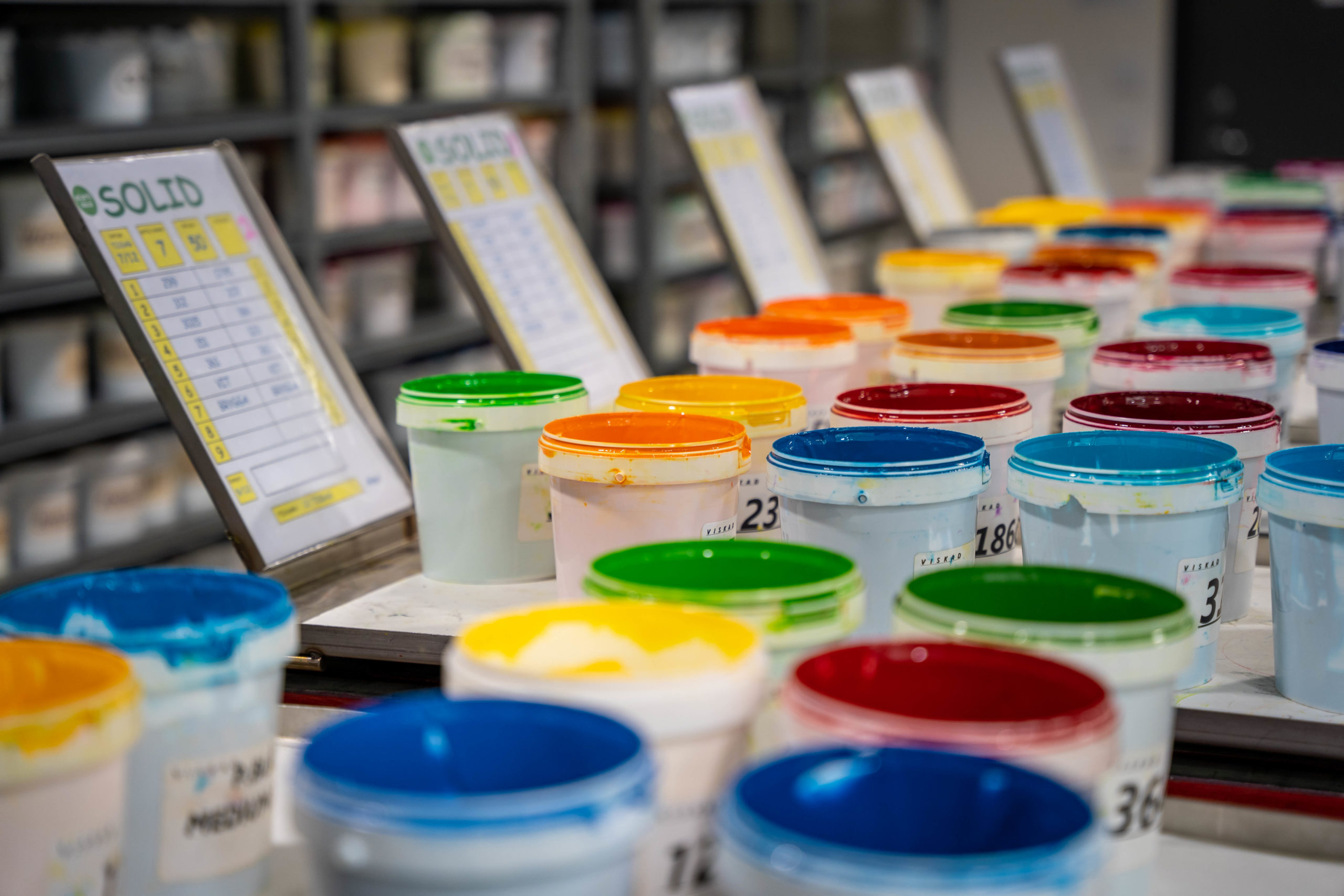
Just like every printing method, a transfer print has its own advantages and disadvantages. Here are some reasons why you should choose a transfer print over other printing methods:
The disadvantages of a transfer print are:
Although the manufacturing process for a transfer print takes time, it offers more advantages. Overall, a transfer print is a high-quality, efficient, and economical method for clothing branding.
A transfer print is often used when individual, full-color designs need to be printed on textiles or other materials. With a transfer, you have the ability to create multi-colored print patterns with gradients. Transfer prints can be applied to most garments in small and large sizes, featuring logos, photorealistic effects, reflectivity, or flat colors. It’s a versatile print that generally fits all scenarios, whether it’s for rugged workwear, sports or corporate attire, on shirts, pants, bags, and other accessories. You can even store our transfers on the shelf for up to 5 years, making them handy for quick needs.
The durability of a transfer print can vary depending on the type of material being branded and how it’s cared for. For example, printing on materials like softshell can be more challenging because it tends to “bleed through” the print. The result is a spotty print that looks “moldy.” As a solution to this issue, we have developed the Blocker add-on.
To finally answer the question of how long a transfer print lasts: when applied correctly, Hot Screen’s transfer prints last as long as the garments they are applied to.
The costs of a transfer print can vary depending on the size and complexity of the design, the number of items to be printed, and the type of transfer print. Feel free to contact us for a price estimate. In our online shop, we also provide a comprehensive order tool and a price calculator to help our customers determine prices early on, before placing an order.
Depending on the textile you are printing on, there are various aspects to consider to achieve a perfect textile print. In general, you can follow these steps:
With these tips, you’ll achieve a really good transfer print. Good luck!
About this article
Written by:
Christin
Categories
Related articles

Print Methods - A Comprehensive Guide
Read more
About this article
Written by:
Christin
Categories
Related articles

Print Methods - A Comprehensive Guide
Read more
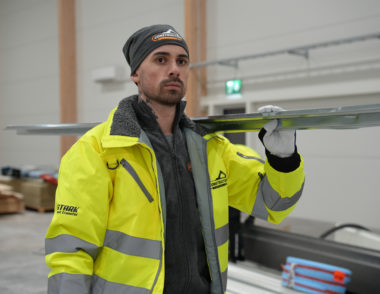
Prints on workwear? Choose the heat transfer Stark!
Products
Tips & Tricks
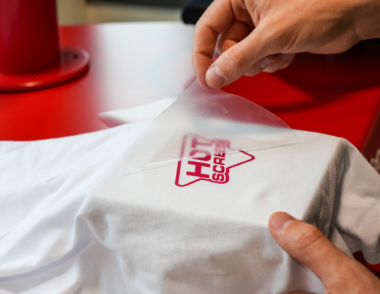
The plotter print is a variation of our product Stark Heat Transfer.
Products
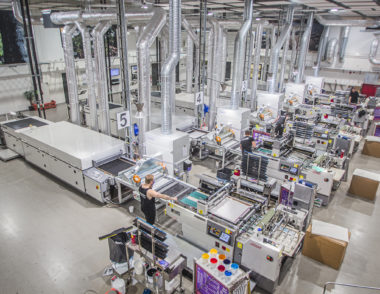
Learn more about the various print methods in the textile industry.
Print methods
Mon-Thu: 08.00-16.30
Fri: 08.00-15.30
Följ oss!
When you archive an article, it disappears from your webshop and is no longer orderable.
When you activate an article, it disappears from your archive and you can order it again